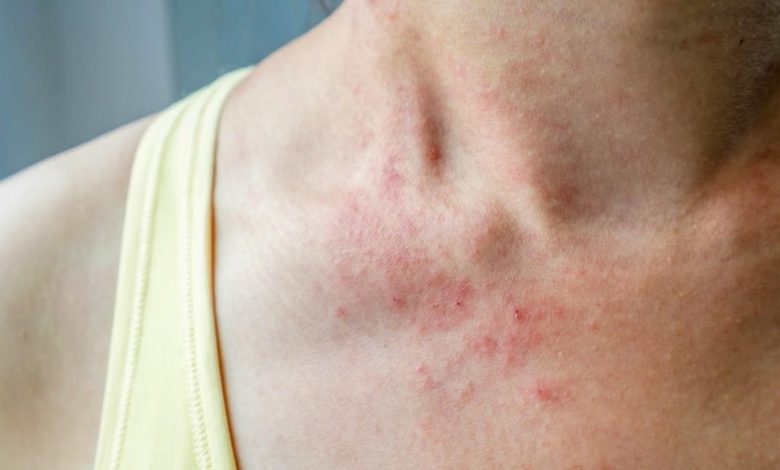Allergy to dust: how to recognize symptoms?

Dust is a witch, it leads a life of hell, we chase it in the morning, it will come back tomorrow”, Chantal Goya sang. This fine airborne debris is the nightmare of the home’s fairies…and of the allergic!
Dust allergy: what are we talking about?
Allergy is an inappropriate reaction of the immune system to a usually harmless substance: pollens, animal hair, molds, or dust. “Dust allergy is more specifically an allergy to house dust mites,” says Dr. Clarisse Santos. Mites are tiny organisms about 0.3 mm in length, invisible to the naked eye, that belong to the family of arachnids, proliferate in our interiors and feed mainly on skin debris. According to the Swiss Medical Journal, “one gram of dust can contain 10,000 mites and 0.25 g of dander can feed several million mites for three months.”
What are the symptoms of dust allergy?
Like other allergies, allergy to dust will cause symptoms such as the following:
sneezing in bursts, especially in the morning when the bed rises;
a clear runny nose;
the scratching nose and throat;
itching;
eyes that sting or scratch and tear.
Allergic reactions may also be accompanied by respiratory symptoms such as cough or asthma (wheezing).
“The symptoms of allergy to dust mites are the same as those of allergy to pollens, but they occur year-round with a strengthening in spring and autumn,” says Dr. Clarisse Santos. It is a so-called permanent allergy.”
How do I diagnose a dust allergy?
By consulting your doctor when symptoms strongly affect your daily life. Depending on the diagnosis, your doctor may refer you to an allergist for an allergy evaluation. “Allergy testing can identify the allergen(s) causing an allergic reaction through skin testing,” explains the specialist. The prick test involves testing the skin—most often the forearm—for responsiveness to a tiny amount of allergen inserted under the skin with a lancet. Don’t panic – it’s painless! If allergy is present, a small skin rise develops within a few minutes. Skin tests may be supplemented with a blood test.
What is the treatment for dust allergy?
Allergy to dust is very common. According to the WHO, mites cause 70% of respiratory allergies. Fortunately, environmental measures and symptomatic treatments can help relieve discomfort. “When symptoms are mild and occur from time to time in very specific situations, the doctor may prescribe a topical antihistamine treatment (drops in the nose and/or eyes) or by mouth,” says Dr. Santos. If allergy to dust mites is very bothersome to the patient, desensitization may be done.”
Allergy to dust: what are the right reflexes to adopt?
Mites proliferate in the bedroom. They are found in particular on the mattresses, pillows, duvets and quilts, but also in the armchairs, cushions and sofas: in short, they love the places where you bask! They are also particularly fond of soft toys, curtains and carpets.
Simple measures can reduce exposure to dust mites and reduce allergic symptoms. For example:
avoid heating your room to more than 18°C;
eliminate carpets and rugs in favor of hardwood floors such as parquet or lino;
ventilate your home every day for at least 30 minutes, even (and especially!) in winter;
change your sheets and pillow cases every week;
Wash your bedding regularly at 60°C (sheets, pillowcases, duvet covers);
clean your duvets, pillows and blankets at least once a year.
“There are also dust mite covers for mattresses, pillows and duvets. These covers provide a barrier between the bed linen and the patient and thus greatly reduce exposure to dust mites, Dr. Santos added. Preference should be given to covers with closures that enclose the mattress, pillow and duvet in addition and are not treated with anti-mite chemicals.”












